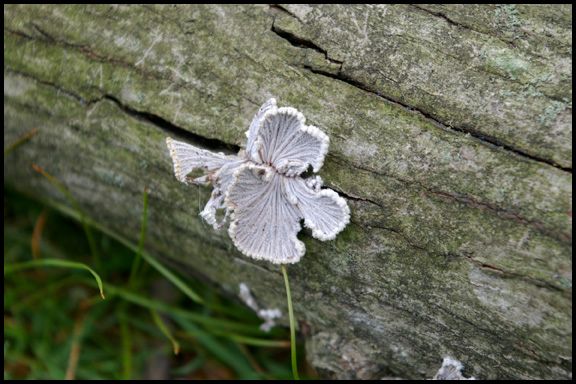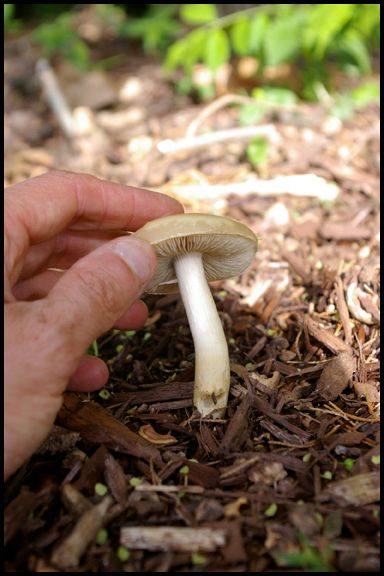100 More Species #7: Split gill

Split gill Schizophyllum commune
This is the second of the three fungi on that one log I mentioned in the previous entry. This fungus produces an unambiguous mushroom of a fruiting body, and even has gills like our most familiar mushrooms. It is not closely related to most other gill-bearing mushrooms, and is distinct in several ways.
The split-gill mushroom can produce spores, then dry out completely until it becomes humid or rainy again, then produce spores again. This resistance to dessication makes it one of the few mushrooms active in the New England winter. The fungus has another quirk: through a complicated trick of math and genetics (or perhaps witchcraft--it might be better if you read Tom Volks entry for this information) this organism effectively has 28,000 different reproductive types. If two split gill fungi from different parents encounter one another, they have a 27,997 out of 28,000 chance of being capable of reproduction. That makes our 50% chance seem pretty pathetic.
Perhaps as a result of these adaptations, this fungus is the most widely spread species in its kingdom, found on every continent except Antarctica. (According to Volk. One assumes that if humans have brought dead wood to Antarctica there may be split gill fungus growing within it.) Many other fungi thought to be widespread turn out to be different species when tested in the lab. Schizophyllum commune appears to be one big happy family.
Split gill was 365 urban species #35, the entry for February 4th.
EDITED TO ADD:

I intended to take a spore print of this mushroom (growing in mulch near where the branch pictured above had fallen) but I accidentally stepped on it. Fortunately, most mushrom-producing fungi are long-living creatures and more of the same fruiting bodies will appear in the future.